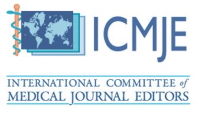Comparison of orally administered misoprostol and membrane sweeping for labor induction among women with singleton postdate pregnancies in South-South, Nigeria
Labor induction among women with singleton postdate pregnancies
Keywords:
membrane sweeping, outpatient basis, oral misoprostol, postdate pregnanciesAbstract
Background/Aim: Postdate pregnancy is an indication for induction of labor to prevent post-term pregnancy with its associated complications. Labor induction processes require hospital admission, resulting in additional costs in managing patients. Therefore, safe and effective outpatient techniques that help reduce the need for inpatient induction of labor are beneficial. The aim of this study is to compare and evaluate the safety and effectiveness of two outpatient methods: a single 50 μg dose of oral misoprostol and membrane sweeping in preventing post-term pregnancy. It also examines the impact on reducing the need for hospital admission for labor induction in postdate singleton pregnancies across two tertiary hospitals in Delta State, Nigeria.
Methods: This two-center randomized controlled trial was conducted on women with uncomplicated postdate singleton pregnancies in an outpatient setting. A total of 157 participants were randomly assigned to one of two intervention groups: the oral misoprostol (OM) group or the membrane sweeping (MS) group. Participants in the OM group received a single 50 μg dose of oral misoprostol, while those in the MS group underwent a one-time membrane sweeping procedure at the antenatal clinic after 40 weeks of gestation.
Results: The participants’ baseline sociodemographic and clinical characteristics were similar in both groups. This study found that the proportion of women that achieved spontaneous onset of labor in the OM group (92.1%) was more than in the MS group (85.3%), but this difference was not statistically significant (P=0.21). This study showed that both 50 μg OM and MS are effective and safe methods for inducing labor on an outpatient basis in post-term pregnancies, with OM offering the benefits of a shorter latency period, decreased reliance for oxytocin augmentation in labor, and reduced overall labor duration (P<0.001, P=0.003 and P<0.001, respectively).
Conclusion: The study showed that both OM and MS are effective and safe outpatient agents in preventing post-term pregnancy, although the proportion of women achieving spontaneous onset of labor was greater in the OM group. The two outpatient induction methods were similar regarding neonatal outcomes and the need for Neonatal Intensive Care Unit (NICU) admission with no recorded maternal adverse effects. Both interventions demonstrated good safety profiles for outpatient care; however, a higher proportion of patients in the OM group reported a positive perception of the intervention compared to those in the MS group.
Downloads
References
Doherty L, Norwitz ER. Prolonged pregnancy: When should we intervene? Curr Opin Obstet Gynecol. 2008;20(6):519–27. DOI: https://doi.org/10.1097/GCO.0b013e328314b6f8
Spong CY. Defining “term” pregnancy: Recommendations from the defining “term” pregnancy workgroup. JAMA - J Am Med Assoc. 2013;309(23):2445–6. DOI: https://doi.org/10.1001/jama.2013.6235
Leduc D, Biringer A, Lee L, Dy J, Corbett T, Duperron L, et al. Induction of Labour. J Obstet Gynaecol Canada [Internet]. 2013;35(9):840–57. DOI: https://doi.org/10.1016/S1701-2163(15)30842-2
Middleton P, Shepherd E, Crowther CA. Induction of labour for improving birth outcomes for women at or beyond term. Cochrane Database Syst Rev. 2018;2018(5). DOI: https://doi.org/10.1002/14651858.CD004945.pub4
Lawani OL, Onyebuchi AK, Iyoke CA, Okafo CN, Ajah LO. Obstetric Outcome and Significance of Labour Induction in a Health Resource Poor Setting. Obstet Gynecol Int. 2014;2014:1–5. DOI: https://doi.org/10.1155/2014/419621
Bako BG, Obed JY, Sanusi I. Methods of induction of labour at the University of Maiduguri Teaching Hospital, Maiduguri: a 4-year review. Niger J Med. 2008;17(2):139–42. DOI: https://doi.org/10.4314/njm.v17i2.37272
Factors E, Risks N. Management of late-term and postterm pregnancies. Obstet Gynecol. 2014;124(2):390–6. DOI: https://doi.org/10.1097/01.AOG.0000452744.06088.48
Souter V, Painter I, Sitcov K, Caughey AB. Maternal and newborn outcomes with elective induction of labor at term. Am J Obstet Gynecol [Internet]. 2019;220(3):273.e1-273.e11. DOI: https://doi.org/10.1016/j.ajog.2019.01.223
Yildirim G, Güngördük K, Karadaǧ ÖI, Aslan H, Turhan E, Ceylan Y. Membrane sweeping to induce labor in low-risk patients at term pregnancy: A randomised controlled trial. J Matern Neonatal Med. 2010;23(7):681–7. DOI: https://doi.org/10.3109/14767050903387078
Ugwu EO, Obi SN, Iferikigwe ES, Dim CC, Ezugwu FO. Membrane stripping to prevent post-term pregnancy in Enugu, Nigeria: A randomized controlled trial. Arch Gynecol Obstet. 2014;289(1):29–34. DOI: https://doi.org/10.1007/s00404-013-2918-5
Tan PC, Khine PP, Sabdin NH, Vallikkannu N, Sulaiman S. Effect of membrane sweeping on cervical length by transvaginal ultrasonography and impact of cervical shortening on cesarean delivery. J Ultrasound Med. 2011;30(2):227–33. DOI: https://doi.org/10.7863/jum.2011.30.2.227
Montis M, Tibaldi V, Santangelo G, Pajno C, Corno S, D’aniello D, et al. The use of misoprostol and mifepristone in second trimester interruption of pregnancy: State of art. Clin Obstet Gynecol Reprod Med. 2020;6(2):1–4. DOI: https://doi.org/10.15761/COGRM.1000280
Management C, For G. ACOG practice bulletin no. 107: Induction of labor. Obstet Gynecol. 2009;114(2 PART 1):386–97. DOI: https://doi.org/10.1097/AOG.0b013e3181b48ef5
Raymond EG, Harrison MS, Weaver MA. Efficacy of Misoprostol Alone for First-Trimester Medical Abortion: A Systematic Review. Obstet Gynecol. 2019;133(1):137–47. DOI: https://doi.org/10.1097/AOG.0000000000003017
Ashmawy NE, Assar TM, Taha SM, Helmy EA. Original Article Effect of Membrane Sweeping on Induction of Labour a Randomized Controlled Trial. Benha J Appl Sci. 2020;5(2):1–7. DOI: https://doi.org/10.21608/bjas.2020.135448
Vogel JP, Osoti AO, Kelly AJ, Livio S, Norman JE, Alfirevic Z. Pharmacological and mechanical interventions for labour induction in outpatient settings. Cochrane Database Syst Rev. 2017;2017(9). DOI: https://doi.org/10.1002/14651858.CD007701.pub3
Adeniji AO, Akinola SE. A comparison of orally administered misoprostol and membrane sweeping for labour induction in uncomplicated singleton post-term pregnancies. S Afr J Obstet Gynaecol. 2013;19(1):4–7. DOI: https://doi.org/10.7196/sajog.584
Kamal H, Youssef A, Elias A. Stripping of membranes versus vaginal misoprostol in induction of labor. J Med Sci Res. 2019;2(2):174. DOI: https://doi.org/10.4103/JMISR.JMISR_31_19
Javadekar D, Rokade A. Can term gestation be induced by misoprostol on OPD basis?Journal of Evolution of Medical and Dental Sciences. 2013; 2(22); 3929-36. DOI: https://doi.org/10.14260/jemds/784
PonMalar J, Benjamin SJ, Abraham A, Rathore S, Jeyaseelan V, Mathews JE. Randomized double-blind placebo controlled study of preinduction cervical priming with 25 µg of misoprostol in the outpatient setting to prevent formal induction of labour. Arch Gynecol Obstet. 2017;295(1):33–8. DOI: https://doi.org/10.1007/s00404-016-4173-z
Pal R, Deora S, Resident S. Comparative Evaluation of Pre-Induction Use of Misoprostol in Post-Term Pregnancies for Cervical Ripening on Outpatient Basis. Int J Heal Sci Res [Internet]. 2017;7(4):171. Available from: www.ijhsr.org
Nyamzi M G, Isah D A, Offiong R A, Isah A Y. Effectiveness of sweeping of membranes in reducing the incidence of elective induction of labor for postdate pregnancies. Arch Med Surg 2019;4:15-21. DOI: https://doi.org/10.4103/archms.archms_36_18
Dare FO, Oboro VO. The role of membrane stripping in prevention of post-term pregnancy: A randomised clinical trial in Ile-Ife, Nigeria. J Obstet Gynaecol (Lahore). 2002;22(3):283–6. DOI: https://doi.org/10.1080/01443610220130571
Boulvain M, Fraser WD, Marcoux S, Fontaine JY, Bazin S, Pinault JJ, et al. Does sweeping of the membranes reduce the need for formal induction of labour? A randomized controlled trial. BJOG An Int J Obstet Gynaecol. 1998;105(1):34–40. DOI: https://doi.org/10.1111/j.1471-0528.1998.tb09347.x
Wong SF, Hui SK, Choi H, Ho LC. Does sweeping of membranes beyond 40 weeks reduce the need for formal induction of labour? BJOG An Int J Obstet Gynaecol. 2002;109(6):632–6. DOI: https://doi.org/10.1111/j.1471-0528.2002.01193.x
Azubuike IJ, Bassey G, Okpani AOU. Comparison of 25 and 50 microgram of misoprostol for induction of labour in nulliparous women with postdate pregnancy in Port Harcourt. Niger J Clin Pract. 2015;18(2):263–7. DOI: https://doi.org/10.4103/1119-3077.151056
Elhassan EM, Mirghani OA, Adam I. Cervical ripening and labor induction with 25 μg vs. 50 μg of intravaginal misoprostol. Int J Gynecol Obstet. 2005;90(3):234–5. DOI: https://doi.org/10.1016/j.ijgo.2005.03.026
Kipikasa JH, Adair CD, Williamson J, Breen JM, Medford LK, Sanchez-Ramos L. Use of misoprostol on an outpatient basis for postdate pregnancy. Int J Gynecol Obstet. 2005;88(2):108–11. DOI: https://doi.org/10.1016/j.ijgo.2004.10.006
Hazra A, Gogtay N. Biostatistics series module 5: Determining sample size. Indian J Dermatol. 2016;61(5):496–504. DOI: https://doi.org/10.4103/0019-5154.190119
Searle G.D. LLC. Cytotec. Division of Pfizer Inc.NY, NY 10017. Revised : Feb 2018.
Jobe AH. Apgar score imprecision. J Pediatr. 2006;149(4):32887. DOI: https://doi.org/10.1016/j.jpeds.2006.08.055
Blackburn S. Maternal, Fetal, & Neonatal Physiology ‐ A Clinical Perspective. 3rd Edition. Missouri: Saunders Elsevier, 2013.
Tang OS, Schweer H, Seyberth HW, Lee SWH, Ho PC. Pharmacokinetics of different routes of administration of misoprostol. Hum Reprod 2002;17(2):332-6. DOI: https://doi.org/10.1093/humrep/17.2.332
Li Z-n, Wang S-r, Wang P. Associations between low birth weight and perinatal asphyxia: A hospital-based study. Medicine 2023;102:13(e33137). DOI: https://doi.org/10.1097/MD.0000000000033137
Litorp H, Sunny AK, Kc A. Augmentation of labor with oxytocin and its association with delivery outcomes: A large-scale cohort study in 12 public hospitals in Nepal. Acta Obstet Gynecol Scand. 2021;100:684–93. DOI: https://doi.org/10.1111/aogs.13919
Downloads
- 198 183
Published
Issue
Section
How to Cite
License
Copyright (c) 2025 Omonigho Esemuede, Osamudia Okhionkpamwonyi, Innocent Okoacha, Akhator Aimiehinor, Patrick Ifeanyi Okonta
This work is licensed under a Creative Commons Attribution-NonCommercial-NoDerivatives 4.0 International License.
















